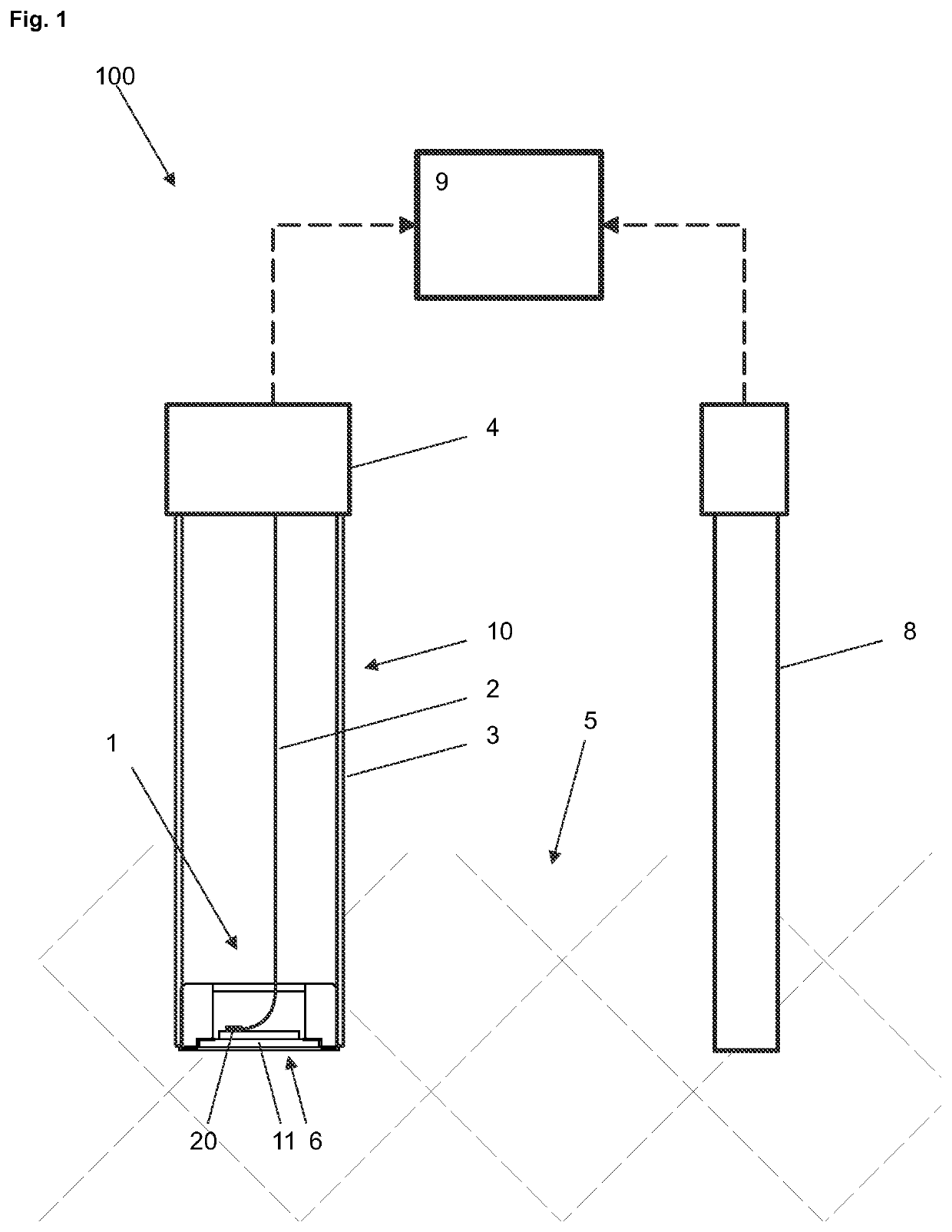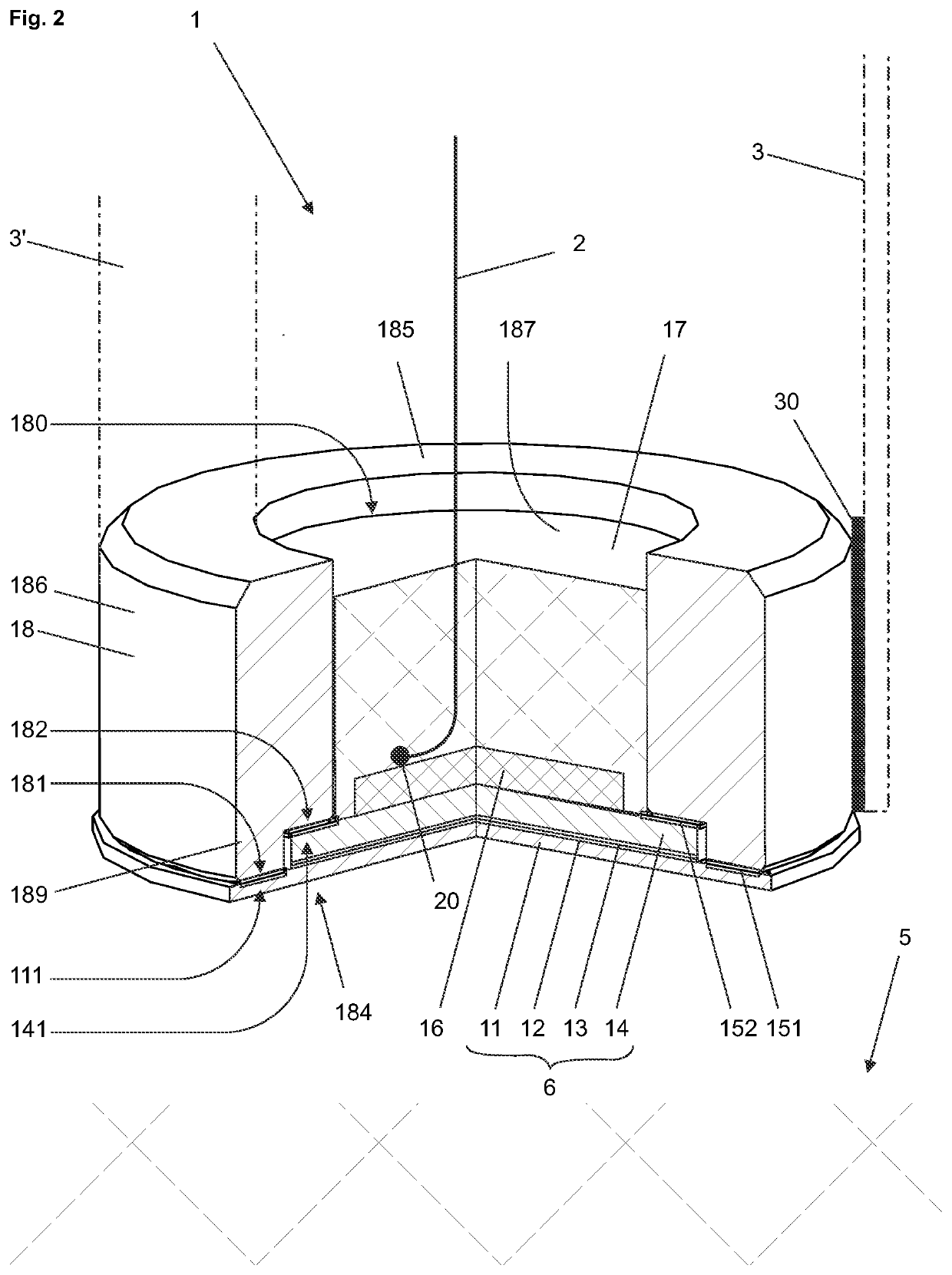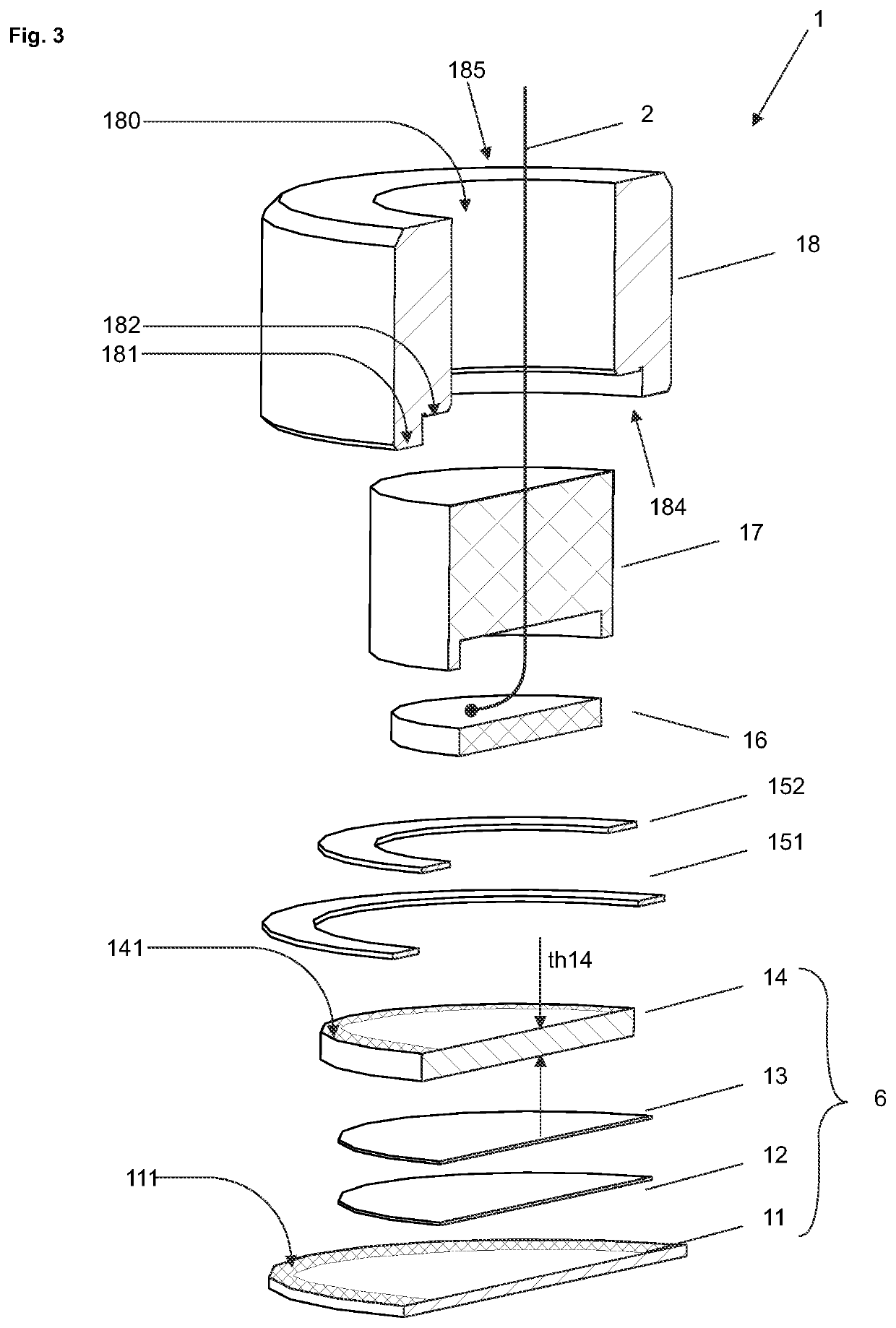Measurement unit for an ion-sensitive solid-state electrode and ion-sensitive electrode
a technology of ion-sensitive solid-state electrodes and measurement units, which is applied in the direction of measuring devices, instruments, electrochemical variables of materials, etc., can solve the problems of glass electrodes, specific metal electrodes may be damaged or destroyed, and known ion-sensitive electrodes with solid internal buffers also show considerable drawbacks
- Summary
- Abstract
- Description
- Claims
- Application Information
AI Technical Summary
Benefits of technology
Problems solved by technology
Method used
Image
Examples
Embodiment Construction
"d_n">[0033]An improved solid-state measurement unit is disclosed for an improved ion-sensitive solid-state electrode, for example an improved solid-state pH-electrode, and an improved ion-sensitive solid-state electrode that is equipped with this solid-state measurement unit.
[0034]An exemplary solid-state ion-sensitive electrode equipped with the solid-state measurement unit can have an improved performance, robustness and durability. The elements of the ion-sensitive electrode can be well protected against ambient chemical and physical influences, when being stored, handled or used for measurement purposes.
[0035]An exemplary measurement unit, which is intended for an ion-sensitive solid-state electrode, such as a pH-electrode, and which serves to measure an ion activity in a measuring solution, includes a layered solid-state structure with an ion-sensitive glass layer provided with a first ring-shaped contact surface, with an electrically conducting layer that directly or via at l...
PUM
| Property | Measurement | Unit |
|---|---|---|
| reduction potential | aaaaa | aaaaa |
| thickness | aaaaa | aaaaa |
| thickness | aaaaa | aaaaa |
Abstract
Description
Claims
Application Information
 Login to View More
Login to View More - R&D
- Intellectual Property
- Life Sciences
- Materials
- Tech Scout
- Unparalleled Data Quality
- Higher Quality Content
- 60% Fewer Hallucinations
Browse by: Latest US Patents, China's latest patents, Technical Efficacy Thesaurus, Application Domain, Technology Topic, Popular Technical Reports.
© 2025 PatSnap. All rights reserved.Legal|Privacy policy|Modern Slavery Act Transparency Statement|Sitemap|About US| Contact US: help@patsnap.com



